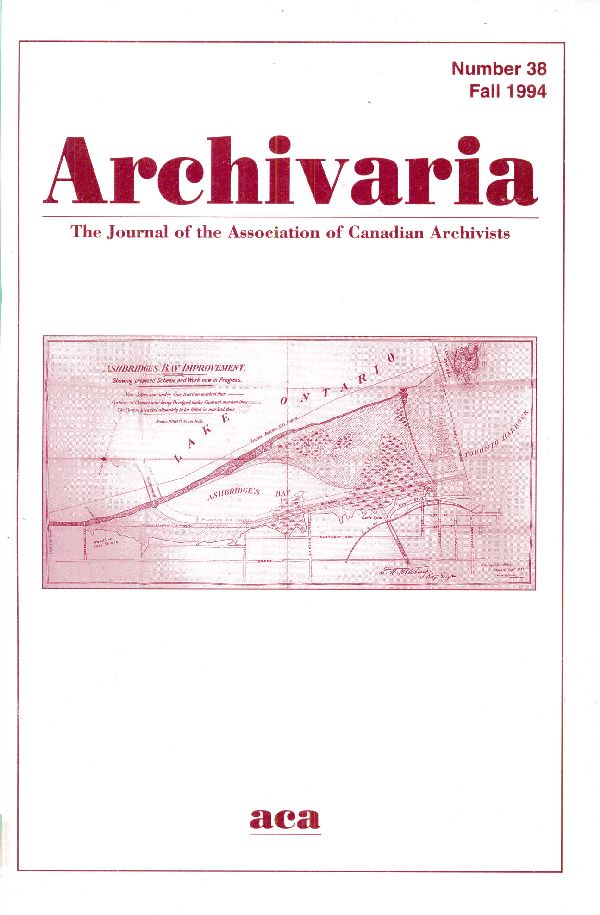Sampling Methodology and its Application: An Illustration of the Tension Between Theory and Practice?
Abstract
In the context of a conference on archivists caught between "the rock and a hard place," sampling offers several ways of illustrating the compromises that inevitably take place in the dialectic between theory and practice. This article examines briefly two of the ways in which sampling confronts us with the tension between theory and practice: first, the choice of sampling as a method of selection, in and of itself; second, the practical problems of applying a specific sampling methodology to the untidy reality of a mass of accumulated documents. Both these reflections are set in the specific context of Quebec's retention decisions with regards to court records and the Archives nationales du Québec's recent experience in applying a particular sampling method to those records.
RÉSUMÉ
Cet article étudie les tensions entre la théorie et la pratique de l'échantillonnage des dossiers de l'arriéré du projet d'échantillonnage des dossiers judiciaires du Québec. L'article examine d'abord les raisons qui ont motivé le choix de l'échantillonnage statistique des dossiers des cours de justice comme instrument de tri tel qu'énoncé dans le Report of the Interministerial Committee on Court Records. Une seconde partie explique la méthode spécifique d'échantillonnage développée par le Comité et se penche sur les diverses difficultés d'application rencontrées durant les deux dernières années: système de classement maison hétérodoxe, classement alphabétique, juridictions partagées, et l'impact des pardons. L'article termine en suggérant, malgré le fait que plusiers problèmes peuvent être résolus sans compromettre la justesse de cette méthode, que quelques obstacles exigent un tel investissement de ressources humaines pour être surmontées, que l'échantillonnage ne représente plus une solution rentable. Les archivistes et les gestionnaires devront faire la part des choses entre les exigences de la représentivité et la précision et leurs coûts en ressources humaines et matérielles.
Authors of manuscripts accepted for publication retain copyright in their work. They are required to sign the Agreement on Authors' Rights and Responsibilities that permits Archivaria to publish and disseminate the work in print and electronically. In the same agreement, authors are required to confirm that "the material submitted for publication in Archivaria, both in its paper and electronic versions, including reproductions of other works (e.g. photographs, maps, etc.) does not infringe upon any existing copyright." Authors of manuscripts accepted for publication retain copyright in their work and are able to publish their articles in institutional repositories or elsewhere as long as the piece is posted after its original appearance on archivaria.ca. Any reproduction within one year following the date of this agreement requires the permission of the General Editor.





